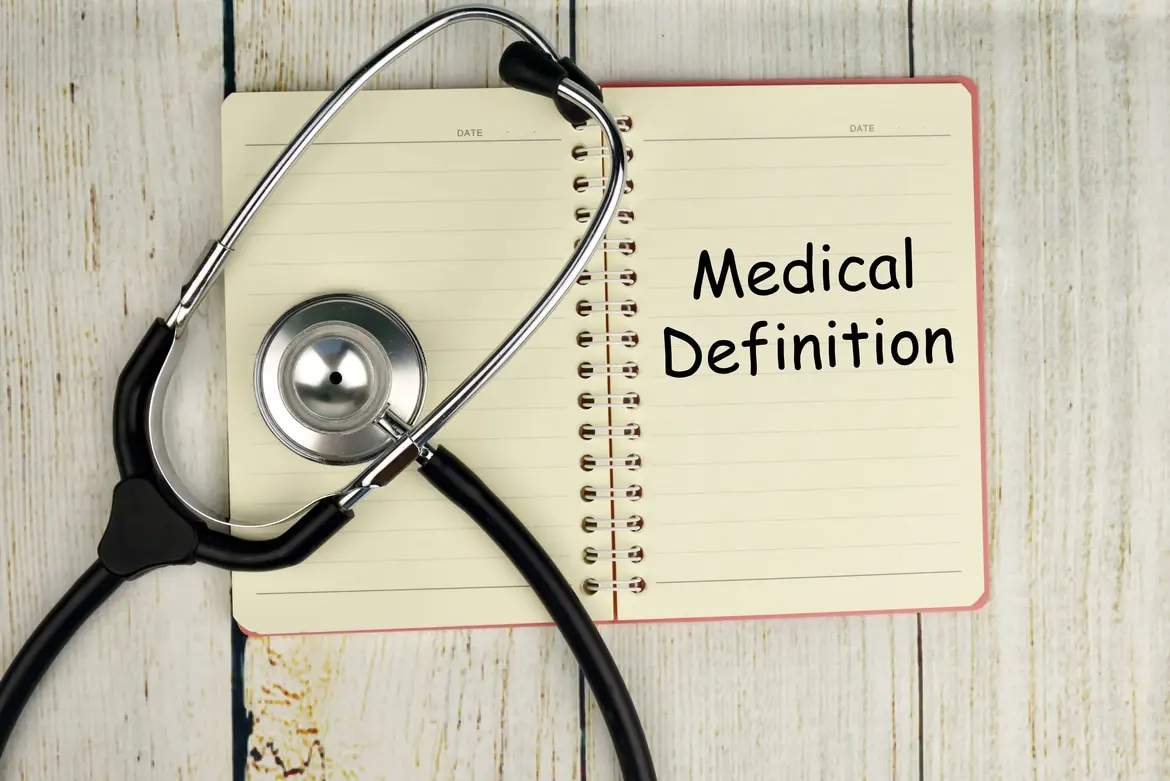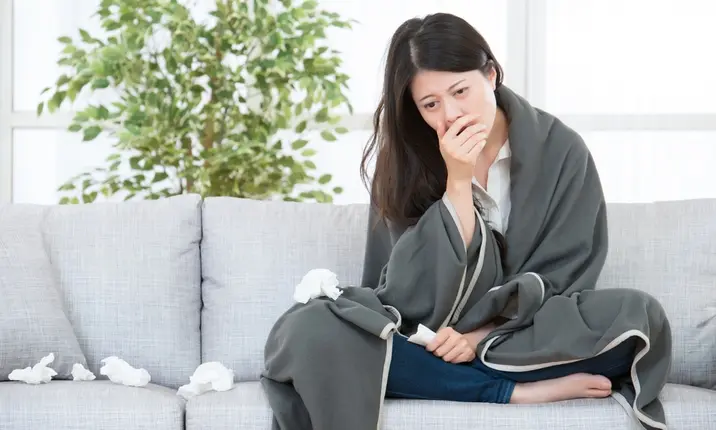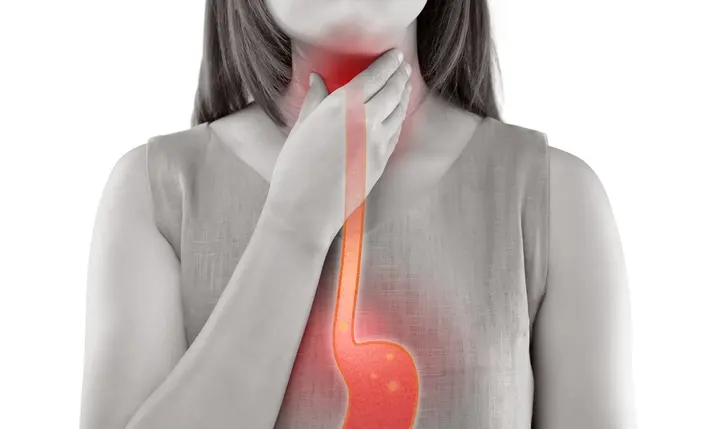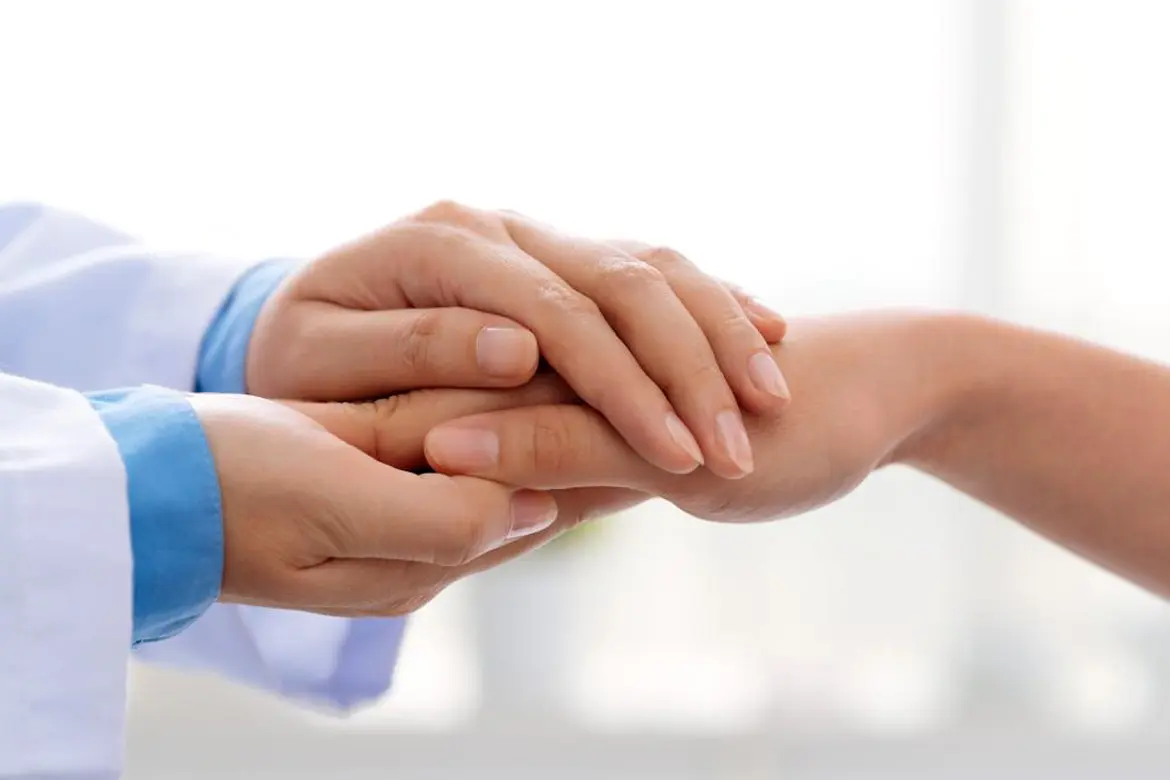-
-
Featured Care Areas


Source: Shutterstock
The Ultimate List of Common Medical Conditions
Last updated: Monday, January 24, 2022 | 8 min reading time
We've all battled a cough, cold, and a sore throat at some point in our lives. And often, we don't think much about it. Here's a list of the most common medical conditions. Read to learn more about common medical symptoms, causes, and treatment.
Do you know your strains from your sprains? Your rhinovirus from your rhinitis? Your hyperlipidaemia from your hyperhidrosis?
If not, read on! We're doing a full-body scan, from head to toe, to examine some common health conditions, their official medical terms, and their causes, symptoms and treatments.
Cephalalgia (headache)
While this sounds serious, cephalalgia is actually just referring to a headache. This is a common condition that causes discomfort in the head or neck, and most people have at least once a year.
Causes:
Headaches may be attributed to a host of reasons ranging from lack of sleep, dehydration, stress and anxiety, and hormonal changes to exposure to bright light and loud noise.
Symptoms:
You may experience sensitivity to light, loss of appetite, facial pain and pressure, dizziness, and blurred vision.
Treatment and prevention:
Resting in a quiet dark room, administering a hot or cold compress, gentle head massages, and over-the-counter medication may help soothe a headache.
Some people may experience headaches from triggers that can be controlled, such as dehydration, skipped meals and sleep deprivation. Avoid these triggers as much as possible to prevent headaches.
Read more about common headaches and symptoms to look out for. If you are experiencing recurring headaches, speak to your doctor.
Rhinovirus (common cold)
You've almost certainly had a rhinovirus infection at some point in your life, but you've probably called it something else… and that's a cold! The common cold is a viral infection of your nose and throat.
Causes:
Although many viruses can cause a cold, the rhinovirus is the most common cause of the common cold.
Symptoms:
These may include a runny or stuffy nose, sore throat, cough, and congestion.
Treatment and prevention:
Most cases are mild, so you should be able to treat yours with plenty of rest, proper hydration and over-the-counter nasal decongestants.
To avoid catching a cold, wash your hands regularly and avoid touching your face. Strengthening your immune system by eating healthy, getting enough sleep and exercising also helps to keep those pesky bugs away.
Otitis externa (swimmer’s ear)
Otitis externa is far more commonly known as swimmer's ear. This ear infection causes painful inflammation in the ear canal, which can sometimes temporarily affect your hearing and balance.
Causes:
Regular exposure to water and sticking stuff in your ear can increase your risk of developing the condition. If your ears hurt, itch or discharges pus, take a trip to your GP for a proper diagnosis and treatment.
Symptoms:
Redness on the outer ear, itch in ear, ear pain, pus in ear.
Treatment and prevention:
The best way to avoid otitis externa is to keep your ears clean and dry. Swimmer's ear is usually treated with antibiotics. If your ears hurt, itch or discharge pus, take a trip to your ENT for a proper diagnosis and treatment.
Conjunctivitis (sore/pink eye)
You might have heard of this one. It is also known as sore or pink eye. Conjunctivitis is the inflammation of the conjunctiva, the thin membrane that covers the front of the eye and inside your eyelids, and it's usually caused by a bacterial or viral infection. It's highly contagious, so if your eyes are red, swollen, itchy or oozing, make sure to visit an ophthalmologist immediately.
Causes:
Common causes include viruses, bacteria or allergies. It may also be caused by irritants such as foreign particles that went into the eye.
Symptoms:
Redness, itchiness, a feeling of irritation, discharge or tearing from one or both eyes.
Treatment and prevention:
Treatment is usually aimed at relieving symptoms. It may involve using artificial tears, cleaning the eyelids with a wet cloth and applying cold or warm compresses. Antihistamine eyedrops may be prescribed for allergic conjunctivitis. Practicing good hygiene is important to prevent the spreading of conjunctivitis.
Pharyngitis (sore throat)
Does it hurt to swallow? This may be due to a sore throat. Pain or soreness in the throat is known as pharyngitis. It is usually a symptom, rather than a condition and may be acute, recurrent or chronic, depending on the cause.
Causes:
Pharyngitis is most commonly caused by an inflammation of the pharynx (the membrane-lined cavity behind the nose and mouth) due to a viral or bacterial infection. It may also be caused by allergies, dry air or exposure to second-hand smoke.
Symptoms:
Sore, dry or scratchy throat.
Treatment and prevention:
Symptoms can be relieved by drinking plenty of fluids, gargling with warm salt water and taking throat lozenges to soothe the pain, but if the pain persists, approach an ENT doctor.
To prevent pharyngitis, avoid sharing food, drinks and eating utensils and maintain good hygiene. It also helps to avoid smoking and inhaling second-hand smoke.
Tussis (cough)
OK, you'll rarely hear it called this, but tussis is the medical term for a cough. A cough may merely be a temporary inconvenience or it could also indicate an underlying issue that is serious.
Causes:
Coughs are usually a result of an upper or lower respiratory tract infection – like the flu, which is caused by that pesky rhinovirus – or by something else, like acid reflux, asthma or smoking. If a cough persists for more than 3 weeks, it’s worth taking a visit to your doctor to rule out anything serious.
Symptoms:
In most cases, a cough happens voluntarily or involuntarily to clear the throat and airways of irritants. If there is a serious underlying condition, other symptoms such as worsening cough, swelling in the neck, changes in the voice and difficulty breathing may also be seen.
Treatment and prevention:
A cough caused by a viral infection clears up on its own. Cough suppressants may be used, however, not much is known on how they actually reduce symptoms. Expectorants help to thin and bring up the mucus to be expelled. Honey and lemon are also great home remedies that can help relieve cough symptoms. If a cough persists for more than 3 weeks, it's worth taking a visit to your doctor to rule out anything serious.
To prevent coughing, try to avoid coming into contact with people who are sick. You should also drink plenty of water to stay hydrated. If your cough is due to allergies, identify the triggers and avoid exposure to them.
Pyrexia (fever)
Got a temperature? Feeling feverish? The clinical term for this is pyrexia.
Causes:
Fevers are usually a symptom of something else, like a lung or ear infection, and will usually go away after a few days rest. More rarely, a fever can be related to something serious, like an autoimmune condition or a hormone disorder. Certain medications, dehydration or even sunburn can also cause fever in some cases.
Symptoms:
A body temperature that is higher than normal (i.e. 37°C), shivers and feeling cold, sweating, low appetite, lack of energy and feeling sleepy.
Treatment and prevention:
Once the cause of the fever is determined, treatment is administered. Fevers due to bacteria may be treated with an antibiotic. For a viral fever, an NSAID may be given to relieve symptoms.
The best way to prevent a fever is to avoid being exposed to infectious agents. This can be done by practicing good hygiene – washing hands regularly, avoid touching your face, and by avoiding the sharing of eating utensils.
Gastroenteritis (stomach flu)
You'll probably know gastroenteritis as the stomach flu. The stomach flu can be nasty but it usually only lasts a few days. The most important thing is to stay hydrated, as it's easy to dehydrate when you're not keeping food or drink down. Seek medical attention from your gastroenterologist immediately when there are signs of dehydration such as dry skin and dry mouth.
Causes:
Bacteria and viruses are the most common causes of gastroenteritis. Sometimes it can also be attributed to parasites, food allergies, antibiotics and toxins.
Symptoms:
The classic symptoms to look out for are diarrhoea, vomiting, stomach pain and pyrexia (you know what that means now!). Other symptoms include nausea, chills, headache, and muscle aches.
Treatment and prevention:
Most people will not require any specific treatment as it is a self-limiting disease. It's important to stay hydrated for rapid recovery. Medications may be prescribed to relieve other symptoms, such as fever and vomiting.
Practice the same things you do to avoid acquiring any viral infection to prevent getting the stomach flu – wash your hands often and don't share eating utensils. You should also be cautious when eating raw or undercooked food and avoid contaminated water and ice cubes as these may contain infectious organisms.
Contusion (bruise)
You've probably had several contusions in your life. It sounds serious, but actually, it's just a bruise! Most bruises aren't painful and won't need medical attention. However, if you have unexplained bruises accompanied by other symptoms like weight loss, tenderness and pain, speak to your doctor.
Causes:
Contusions can result from a fall, accident, sports injury or medical procedure. It happens due to the pooling of blood under the skin after an internal blood vessel injury, resulting in discolouration and inflammation. Older people are more likely to have a contusion. There are also certain medical conditions that may make a person more prone to developing a contusion.
Symptoms:
Black-and-blue marks that may appear red or purple at first. The bruised area and surrounding skin may also be tender to touch.
Treatment and prevention:
Most contusions fade away without treatment. For more severe contusions, resting and elevating the injured area can prevent swelling and relieve pain. Ice packs or heating pads and pain medications can also help in the healing process.
To reduce your risk of bruising, keep your surrounding clear of tripping hazards and place furniture appropriately so you don't bump into their corners. You can also wear protective gear like helmets and knee pads when playing contact sports or cycling.
Dysmenorrhoea (menstrual cramps)
This condition only affects certain women, usually once a month. Can you guess what it is? Yep, it's menstrual cramps! 'Primary' dysmenorrhea is the most common type, with pain usually occurring 1 or 2 days before menstrual bleeding starts, and then lasting between 12 – 72 hours. 'Secondary' dysmenorrhea refers to pain caused by a disease, such as endometriosis, pelvic inflammatory disease or benign uterine tumours (fibroids). If you have severe or unusual pain around your period, speak to your gynaecologist to find out more.
Causes:
Dysmenorrhoea may be caused by a chemical imbalance in the body that results in abnormal contractions of the uterus. It may also be caused by other conditions, such as endometriosis, uterine fibroids, infections or tumours.
Symptoms:
Cramping or pain in the lower abdomen, lower back pain that radiates down the legs, nausea, vomiting, diarrhoea, fatigue, headaches and weakness.
Treatment and prevention:
Treatment may include pain medications, such as aspirin or paracetamol, heating pads, and abdominal massage.
Some lifestyle changes may also help in easing or preventing period pains, such as avoiding tobacco and alcohol.
Cystitis (urinary tract infection)
Cystitis is a urinary tract infection that can affect both men and women, although it is more common in the latter. This is why men would require more testing if diagnosed with cystitis.
Causes:
Cystitis is usually caused by bacteria, most commonly E. coli that enters the urinary tract and bladder resulting in an infection.
Symptoms:
Symptoms include pain when you urinate, abnormal urine colour and foul-smelling urine, a burning or stinging sensation when urinating, a frequent urge to urinate as well as abdominal and pelvic pain and pressure. Luckily, cystitis will usually clear up by itself over the course of a few days, but if your symptoms don’t go away, your doctor may be able to prescribe antibiotics to help.
Treatment and prevention:
Antibiotics are typically used to treat cystitis. Practicing good hygiene and drinking plenty of water can help to prevent a urinary tract infection.
Ankylosis (stiff joint)
Ankylosis basically refers to the stiffening of a joint in your body, commonly caused by a history of previous injury.
Causes:
Joint stiffness is a symptom that becomes more common with age, or due to other conditions such as rheumatoid arthritis, osteoarthritis, lupus and gout.
Symptoms:
Stiffness in the joints that make movements difficult. This may be accompanied by pain, swelling and inflammation in the joints.
Treatment and prevention:
Hot or cold compress may help relieving symptoms of stiffness, pain and swelling.
Losing weight or maintaining it at a healthy level can help to prevent the development of stiff joints. Keep yourself active and remember to pace yourself when you start a new activity to avoid stressing joints before they are ready that can lead to stiffness.
Hyperlipidaemia (high cholesterol)
You probably know 'hypertension' as a fancy word for high blood pressure, but did you know that 'hyperlipidaemia' is the proper medical term for high cholesterol? It is also known as hypercholesterolaemia. Cholesterol is a type of fat that your body makes, which can also be found in highly processed foods. Age, lack of exercise, a poor diet and your genes can all affect your cholesterol level. Most people with high cholesterol don't even know they have it, but it can cause hypertension as it builds up in the blood vessels. If left untreated, it can lead to blood clot formation, potentially leading to serious complications such as a heart attack or stroke.
Causes:
Although hyperlipidaemia can be inherited, it is most often due to lifestyle causes such as an unbalanced diet, insufficient exercise, being overweight or obese, smoking or heavy alcohol use.
Symptoms:
Symptoms are usually only present at an advanced state, manifesting as a heart attack or stroke.
Treatment and prevention:
Lifestyle changes is an important pillar of hyperlipidaemia treatment and may be enough to reduce risk of heart disease and stroke. You should go for regular cholesterol screening every couple of years.
Allergic rhinitis (hay fever)
Do you always seem to have a runny nose, itchy eyes and the sneezes? You could have allergic rhinitis, otherwise known as hay fever!
Causes:
Hay fever is basically your body 'overreacting' to allergens in the air, like pollen, dust, mold or pet hair.
Symptoms:
Sneezing, runny, stuffy and itchy nose, coughing, sore throat, itchy and watery eyes and dry, itchy skin.
Treatment and prevention:
Treatment for the condition usually involves a combo of antihistamine medication, eye drops and nasal sprays. The best way to prevent allergies is to avoid your allergy triggers.
Gastro-oesophageal reflux (GERD)
GERD is a condition that affects the muscle between the food pipe or gullet and the stomach, and occurs when acidic stomach contents flow backwards into the food pipe. This causes a burning sensation in the chest, which you probably know as heartburn.
Causes:
GERD happens when the oesophageal sphincter (muscle between the food pipe and the stomach) is weak and lets the stomach's contents flow back into the oesophagus.
Symptoms:
Difficulty swallowing and the feeling of something stuck in your throat
Treatment and prevention:
In most cases, subtle changes to your diet and lifestyle will help to prevent and minimise the symptoms.
Hypothyroidism (underactive thyroid)
More commonly known as an 'underactive thyroid', hypothyroidism refers to a decreased hormone production in the thyroid gland (in your neck).
Causes:
Hypothyroidism occurs when the gland becomes inflamed and the body start to attack it. This interferes with its production of essential thyroid hormones.
Symptoms:
This can make you feel overly tired, depressed and constipated, slow down your heart rate, make it more difficult to lose weight, and mess up your menstrual cycle.
Treatment and prevention:
Medication is given to help replace the amount of thyroid hormone that the body is no longer making. Treatment for hypothyroidism is usually lifelong.
Hypothyroidism cannot be prevented. Talk to your doctor if you experience any symptoms of hypothyroidism so you can manage the condition and prevent it from developing into a more severe form.
Chronic bronchitis (lung infection)
This is a common condition that affects the lungs. This condition can be hard to shift, especially if you smoke.
Causes:
Bronchitis is usually caused by an infection by a virus or bacteria.
Symptoms:
The lungs will produce lots of excess mucus, which means you'll be coughing more than usual. You may also have a sore throat, runny nose, headaches and chest pain.
Treatment and prevention:
Getting lots of rest, drinking plenty of fluids, quitting cigarettes and taking over-the-counter medication can all help, but it's best to speak to your doctor for more tailored advice.
Quit smoking and stay away from second-hand smoke and other lung irritants to prevent from getting chronic bronchitis.
Sprain (ligament injury)
You've probably experienced this type of injury at least once before, but what actually is it? A sprain refers to a damaged or torn ligament (the tissues connecting the bones in your joints). This is different from a strain, which refers to a stretched or torn muscle or tendon (the tissue that connects muscles to bones).
Causes:
Both strains and sprains can occur after falling over, twisting a joint or being hit.
Symptoms:
Pain, swelling, bruising and limited movement ability at the affected joint.
Treatment and prevention:
Luckily, they can usually be treated at home by following the RICE method: rest, ice, compression and elevation. More rarely, surgery will be required to repair the torn area.
Hyperhidrosis (excessive sweating)
Do you feel hot and sweaty all the time? It might not just be the climate. Hyperhidrosis, or excessive sweating, is a common disorder that can occur in otherwise healthy individuals for seemingly no reason at all. If you have it, your doctor may be able to prescribe strong antiperspirants as well as oral medications to help keep the condition under control.
Causes:
The most common form of hyperhidrosis occurs due to the nerves that trigger the sweat glands becoming overactive.
Symptoms:
Excessive sweating that exceeds normal sweating.
Treatment and prevention:
Medications may include prescription antiperspirant, and surgery for severe hyperhidrosis.
Hyperhidrosis is not preventable.
Onychocryptosis (ingrown toenail)
What a mouthful this one is! This fairly frequent problem is found on your foot, and occurs when a small part of your nail grows at an awkward angle. That's right – it's an ingrown toenail! This is a common condition, especially amongst athletes, but luckily, it will usually sort itself out with proper hygiene and care. If your toe does become infected, you may need a surgical procedure to remove part of the nail.
Causes:
Common causes include wearing shoes that crowd toenails, cutting toenails too short or not straight across, or having unusually curved toenails.
Symptoms:
Pain, tenderness and redness around the toenail, swelling or the toe around the nail and infection of the tissue around the toenail.
Treatment and prevention:
For more severe ingrown toenails, partially or completely removing the nail and tissue may be recommended.
To prevent an ingrown toenail, keep toenails at a moderate length and ensure you trim them straight across. Wear protective footwear that fit properly.
If you think you may need treatment for any of these health conditions, make an appointment with a doctor.
Ankylosis. (2013, February 7). Retrieved 3 May 2018 from https://www.primehealthchannel.com/ankylosis.html
Cherney, K. & Martel, J. (2017, August 29). Pharyngitis. Retrieved 3 May 2018 from https://www.healthline.com/health/pharyngitis
Conjunctivitis. (n.d.). Retrieved 3 May 2018 from https://www.webmd.com/eye-health/eye-health-conjunctivitis
Excessive Sweating (Hyperhidrosis). (n.d.). Retrieved 3 May 2018 from https://www.webmd.com/skin-problems-and-treatments/hyperhidrosis2
Gastroenteritis. (n.d.). Retrieved 3 May 2018 from https://www.webmd.com/digestive-disorders/gastroenteritis#1
Gastroesophageal reflux (GERD). (n.d.). Retrieved 3 May 2018 from https://www.webmd.com/heartburn-gerd/guide/reflux-disease-gerd-1#1
Holland, K. (2016, December 5). Is It a Sprain or a Strain? Tips for Identification. Retrieved 3 May 2018 from https://www.healthline.com/health/sprain-vs-strain
Hypothyroidism. (n.d.). Retrieved 3 May 2018 from https://www.webmd.com/women/hypothyroidism-underactive-thyroid-symptoms-causes-treatments#1
Kerkar, P. (n.d.). What is a Headache or Cephalalgia? Retrieved 3 May 2018 from https://www.epainassist.com/headache/what-is-headache-or-cephalalgia
Kyoung, M. (2017, May 7). Ingrown Toenail (Onychocryptosis). Retrieved 3 May 2018 from https://www.medicinenet.com/ingrown_toenail/article.htm#ingrown_toenail_facts
Madel, R. (2016, January 29). Understanding Chronic Bronchitis: What is It? Retrieved 3 May 2018 from https://www.healthline.com/health/copd/understanding-chronic-bronchitis
Moore, K. (2017, June 20). Allergic Rhinitis. Retrieved 3 May 2018 from https://www.healthline.com/health/allergic-rhinitis
Nordqvist, C. (2017, December 7). Fever: What You Need to Know. Retrieved 3 May 2018 from https://www.medicalnewstoday.com/articles/168266.php
Swimmer's Ear (Otitis Externa). (n.d.). Retrieved 3 May 2018 from https://www.webmd.com/cold-and-flu/ear-infection/tc/swimmers-ear-otitis-externa-topic-overview#1
Watson, K. (2018, April 12). What is a Contusion? Retrieved 3 May 2018 from https://www.healthline.com/health/what-is-a-contusion
What Are Menstrual Cramps? (n.d.). Retrieved 3 May 2018 from https://www.webmd.com/women/menstrual-cramps#1
What Causes a Cough? (n.d.). Retrieved 3 May 2018 from https://www.healthline.com/symptom/cough
What's Causing My Cold? (n.d.). Retrieved 3 May 2018 from https://www.webmd.com/cold-and-flu/cold-guide/common_cold_causes
What is Cystitis? (n.d.). Retrieved 3 May 2018 from https://www.webmd.com/urinary-incontinence-oab/what-is-cystitis#1
What is Hyperlipidaemia? (n.d.). Retrieved 3 May 2018 from https://www.webmd.com/cholesterol-management/hyperlipidemia-overview#1
All about coughs and their causes. (2017, November 16) Retrieved December 17, 2021, from https://www.medicalnewstoday.com/articles/220349
Pharyngitis. (2019, March 07) Retrieved December 17, 2021, from https://www.healthline.com/health/pharyngitis
Pink eye (Conjunctivitis). (2020, June 16) Retrieved December 17, 2021, from https://www.mayoclinic.org/diseases-conditions/pink-eye/symptoms-causes/syc-20376355
Fever: What you need to know. (2020, May 05) Retrieved December 17, 2021, from https://www.medicalnewstoday.com/articles/168266
Stomach Flu (Gastroenteritis) Symptoms, Signs, Treatment Remedies, Diet. (n.d) Retrieved December 17, 2021, from https://www.medicinenet.com/gastroenteritis_stomach_flu/article.htm
Bruises. (2020, August 11) Retrieved December 17, 2021, from https://my.clevelandclinic.org/health/diseases/15235-bruises
Dysmenorrhea. (n.d) Retrieved December 17, 2021, from https://www.hopkinsmedicine.org/health/conditions-and-diseases/dysmenorrhea
Urinary Tract Infections. (2020, March 07) Retrieved December 17, 2021, from https://my.clevelandclinic.org/health/diseases/9135-urinary-tract-infections
Stiff Joints: Why It Happens and How to Find Relief. (2018, September 03) Retrieved December 17, 2021, from https://www.healthline.com/health/stiff-joints
Allergic Rhinitis. (2019, March 07) Retrieved December 17, 2021, from https://www.healthline.com/health/allergic-rhinitis
What You Should Know About Hyperlipidemia. (2021, October 27) Retrieved December 17, 2021, from https://www.healthline.com/health/hyperlipidemia
Hypothyroidism. (2021, April 19) Retrieved December 17, 2021, from https://my.clevelandclinic.org/health/diseases/12120-hypothyroidism
GERD. (2020, September 11) Retrieved December 17, 2021, from https://www.webmd.com/heartburn-gerd/guide/reflux-disease-gerd-1
Chronic Bronchitis. (n.d) Retrieved December 17, 2021, from https://www.hopkinsmedicine.org/health/conditions-and-diseases/chronic-bronchitis
Sprains. (2020, September 25) Retrieved December 17, 2021, from https://www.mayoclinic.org/diseases-conditions/sprains/diagnosis-treatment/drc-20377943
Hyperhidrosis. (2020, August 18) Retrieved December 17, 2021, from https://www.mayoclinic.org/diseases-conditions/hyperhidrosis/diagnosis-treatment/drc-20367173
Ingrown toenails. (2019, December 10) Retrieved December 17, 2021, from https://www.mayoclinic.org/diseases-conditions/ingrown-toenails/diagnosis-treatment/drc-20355908
9 Tips for Migraine and Headache Prevention. (2021, March 23) Retrieved January 10, 2022, from https://www.everydayhealth.com/headache-migraine/headache-prevention.aspx
Menstrual Cramps. (2020, August 14) Retrieved January 10, 2022, from https://www.webmd.com/women/menstrual-cramps
3 ways to prevent joint stiffness. (n.d.) Retrieved January 10, 2022, from https://wa-health.kaiserpermanente.org/three-steps-tips-protect-joints/
Cherney, K. & Martel, J. (2017, August 29). Pharyngitis. Retrieved 3 May 2018 from https://www.healthline.com/health/pharyngitis
Conjunctivitis. (n.d.). Retrieved 3 May 2018 from https://www.webmd.com/eye-health/eye-health-conjunctivitis
Excessive Sweating (Hyperhidrosis). (n.d.). Retrieved 3 May 2018 from https://www.webmd.com/skin-problems-and-treatments/hyperhidrosis2
Gastroenteritis. (n.d.). Retrieved 3 May 2018 from https://www.webmd.com/digestive-disorders/gastroenteritis#1
Gastroesophageal reflux (GERD). (n.d.). Retrieved 3 May 2018 from https://www.webmd.com/heartburn-gerd/guide/reflux-disease-gerd-1#1
Holland, K. (2016, December 5). Is It a Sprain or a Strain? Tips for Identification. Retrieved 3 May 2018 from https://www.healthline.com/health/sprain-vs-strain
Hypothyroidism. (n.d.). Retrieved 3 May 2018 from https://www.webmd.com/women/hypothyroidism-underactive-thyroid-symptoms-causes-treatments#1
Kerkar, P. (n.d.). What is a Headache or Cephalalgia? Retrieved 3 May 2018 from https://www.epainassist.com/headache/what-is-headache-or-cephalalgia
Kyoung, M. (2017, May 7). Ingrown Toenail (Onychocryptosis). Retrieved 3 May 2018 from https://www.medicinenet.com/ingrown_toenail/article.htm#ingrown_toenail_facts
Madel, R. (2016, January 29). Understanding Chronic Bronchitis: What is It? Retrieved 3 May 2018 from https://www.healthline.com/health/copd/understanding-chronic-bronchitis
Moore, K. (2017, June 20). Allergic Rhinitis. Retrieved 3 May 2018 from https://www.healthline.com/health/allergic-rhinitis
Nordqvist, C. (2017, December 7). Fever: What You Need to Know. Retrieved 3 May 2018 from https://www.medicalnewstoday.com/articles/168266.php
Swimmer's Ear (Otitis Externa). (n.d.). Retrieved 3 May 2018 from https://www.webmd.com/cold-and-flu/ear-infection/tc/swimmers-ear-otitis-externa-topic-overview#1
Watson, K. (2018, April 12). What is a Contusion? Retrieved 3 May 2018 from https://www.healthline.com/health/what-is-a-contusion
What Are Menstrual Cramps? (n.d.). Retrieved 3 May 2018 from https://www.webmd.com/women/menstrual-cramps#1
What Causes a Cough? (n.d.). Retrieved 3 May 2018 from https://www.healthline.com/symptom/cough
What's Causing My Cold? (n.d.). Retrieved 3 May 2018 from https://www.webmd.com/cold-and-flu/cold-guide/common_cold_causes
What is Cystitis? (n.d.). Retrieved 3 May 2018 from https://www.webmd.com/urinary-incontinence-oab/what-is-cystitis#1
What is Hyperlipidaemia? (n.d.). Retrieved 3 May 2018 from https://www.webmd.com/cholesterol-management/hyperlipidemia-overview#1
All about coughs and their causes. (2017, November 16) Retrieved December 17, 2021, from https://www.medicalnewstoday.com/articles/220349
Pharyngitis. (2019, March 07) Retrieved December 17, 2021, from https://www.healthline.com/health/pharyngitis
Pink eye (Conjunctivitis). (2020, June 16) Retrieved December 17, 2021, from https://www.mayoclinic.org/diseases-conditions/pink-eye/symptoms-causes/syc-20376355
Fever: What you need to know. (2020, May 05) Retrieved December 17, 2021, from https://www.medicalnewstoday.com/articles/168266
Stomach Flu (Gastroenteritis) Symptoms, Signs, Treatment Remedies, Diet. (n.d) Retrieved December 17, 2021, from https://www.medicinenet.com/gastroenteritis_stomach_flu/article.htm
Bruises. (2020, August 11) Retrieved December 17, 2021, from https://my.clevelandclinic.org/health/diseases/15235-bruises
Dysmenorrhea. (n.d) Retrieved December 17, 2021, from https://www.hopkinsmedicine.org/health/conditions-and-diseases/dysmenorrhea
Urinary Tract Infections. (2020, March 07) Retrieved December 17, 2021, from https://my.clevelandclinic.org/health/diseases/9135-urinary-tract-infections
Stiff Joints: Why It Happens and How to Find Relief. (2018, September 03) Retrieved December 17, 2021, from https://www.healthline.com/health/stiff-joints
Allergic Rhinitis. (2019, March 07) Retrieved December 17, 2021, from https://www.healthline.com/health/allergic-rhinitis
What You Should Know About Hyperlipidemia. (2021, October 27) Retrieved December 17, 2021, from https://www.healthline.com/health/hyperlipidemia
Hypothyroidism. (2021, April 19) Retrieved December 17, 2021, from https://my.clevelandclinic.org/health/diseases/12120-hypothyroidism
GERD. (2020, September 11) Retrieved December 17, 2021, from https://www.webmd.com/heartburn-gerd/guide/reflux-disease-gerd-1
Chronic Bronchitis. (n.d) Retrieved December 17, 2021, from https://www.hopkinsmedicine.org/health/conditions-and-diseases/chronic-bronchitis
Sprains. (2020, September 25) Retrieved December 17, 2021, from https://www.mayoclinic.org/diseases-conditions/sprains/diagnosis-treatment/drc-20377943
Hyperhidrosis. (2020, August 18) Retrieved December 17, 2021, from https://www.mayoclinic.org/diseases-conditions/hyperhidrosis/diagnosis-treatment/drc-20367173
Ingrown toenails. (2019, December 10) Retrieved December 17, 2021, from https://www.mayoclinic.org/diseases-conditions/ingrown-toenails/diagnosis-treatment/drc-20355908
9 Tips for Migraine and Headache Prevention. (2021, March 23) Retrieved January 10, 2022, from https://www.everydayhealth.com/headache-migraine/headache-prevention.aspx
Menstrual Cramps. (2020, August 14) Retrieved January 10, 2022, from https://www.webmd.com/women/menstrual-cramps
3 ways to prevent joint stiffness. (n.d.) Retrieved January 10, 2022, from https://wa-health.kaiserpermanente.org/three-steps-tips-protect-joints/

















